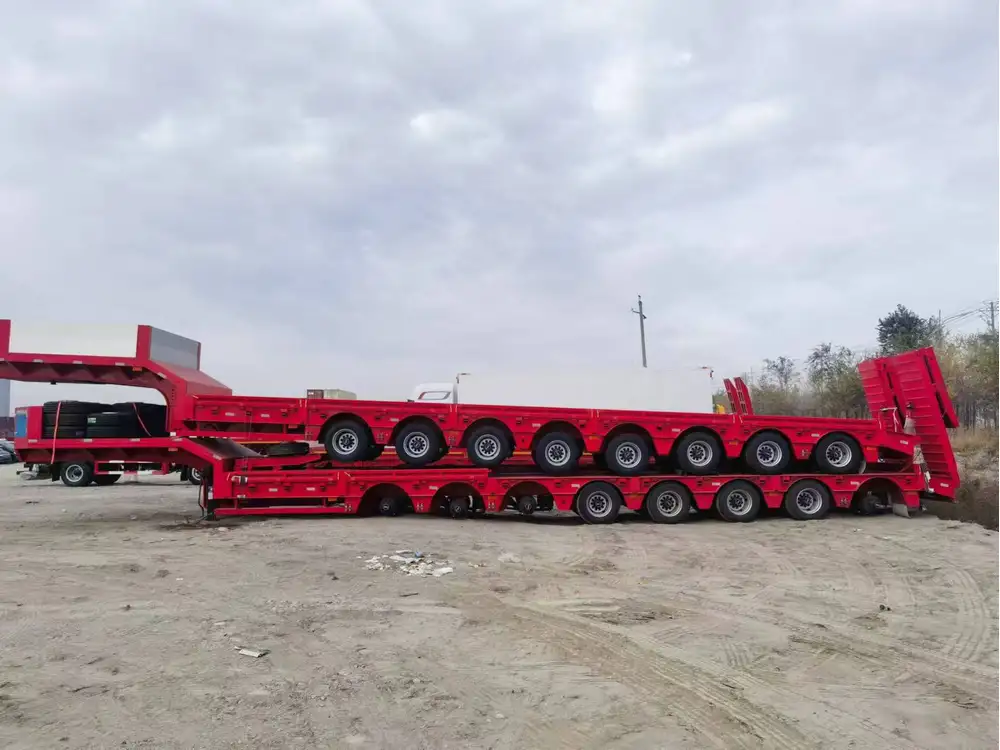Mounting a winch to a dump trailer can significantly enhance its functionality, allowing for easier loading and unloading of heavy materials. This comprehensive guide aims to provide a step-by-step approach to safely and effectively installing a winch on your dump trailer, ensuring a seamless integration that optimizes performance.
Table of Contents
- Understanding Your Dump Trailer
- Selecting the Right Winch
- Essential Tools and Equipment
- Preparation for Installation
- Step-by-Step Installation Process
- Testing Your Winch Setup
- Safety Considerations
- Maintenance Tips
- Conclusion
Understanding Your Dump Trailer
Before mounting a winch, it’s critical to understand your dump trailer’s structure and weight capacities. Dump trailers are primarily designed for transporting loose materials, but their rugged build makes them an excellent platform for additional equipment. Consider the following aspects:
Frame Material: Most dump trailers feature a steel frame which can bear heavy loads. Understanding the tensile strength will help in selecting the appropriate winch.
Weight Capacity: Review the manufacturer’s specifications regarding payload and towing capacities to ascertain the winch’s capabilities.

Selecting the Right Winch
When choosing a winch for your dump trailer, several factors come into play:
| Criteria | Suggestions |
|---|---|
| Pulling Capacity | Ensure the winch can handle at least 1.5 times the maximum weight you’ll be lifting. |
| Power Source | Electric winches are convenient for frequent use, while hydraulic winches offer higher performance for heavier tasks. |
| Fairlead Type | Consider roller fairleads for heavy loads to reduce friction, ensuring smooth operation. |
| Length of Cable | Adequate length is necessary to access materials from the trailer’s farthest point. |
Essential Tools and Equipment
Gathering your tools beforehand can streamline the installation process substantially. Here’s a checklist of what you will need:
- Drill and Drill Bits: For creating mounting holes.
- Wrenches and Sockets: To secure bolts and fittings.
- Wire Strippers and Connectors: For wiring the winch.
- Safety Gear: Gloves and goggles to protect yourself during installation.
- Measuring Tape: For precise measurements in mounting.
Preparation for Installation
Preparation is key to a successful winch installation. Follow these steps to ensure you’re ready to commence:
- Read the Manual: Familiarize yourself with both the dump trailer and the winch manuals to understand specific requirements and recommendations.
- Plan the Mounting Location: Identify where the winch will be attached. The front of the dump trailer is typically ideal for balance and performance.
- Mark Locations for Holes: Use a measuring tape to determine where the winch will sit. Mark the spots for drilling.

Step-by-Step Installation Process
Follow this detailed process for a successful installation:
Drill Mounting Holes: Using the drill, create holes in the trailer’s frame, ensuring proper spacing for the bolting hardware.
- Tip: Use a level to confirm that the winch will sit evenly.
Attach the Winch Mounting Plate: Secure the winch mounting plate using bolts that fit tightly into the drilled holes.
Hardware Usage Bolts To secure the winch and prevent movement. Washers To distribute load and prevent damage to the frame. Lock Nuts To ensure the bolts don’t loosen while in use. Install the Winch: Place the winch onto the mounting plate and align the holes. Fasten it securely with bolts and lock nuts, ensuring that there is no play in the setup.
Connect the Power Supply: Follow these guidelines to wire the winch correctly:
- Use appropriate gauge wire for the power supply.
- Connect the positive wire to the winch’s positive terminal and the negative wire to the trailer’s battery or chassis.
Install the Fairlead: Attach the fairlead to the mounting plate, ensuring it aligns with the winch’s cable to minimize wear and tear.
Thread the Winch Cable: Pull the cable through the fairlead, making sure there’s no kinking. Attach the hook at the end of the cable securely.
Testing Your Winch Setup
Once the installation is complete, it’s crucial to conduct a test before the first use:
- Power Up Your Winch: Connect the power supply to your vehicle’s battery to activate the winch.
Test Winch Operation: Perform a test run by extending and retracting the winch cable slowly, observing for smooth operation.
- Inspect for any Cables or Connection Issues: Ensure no cables are pinched or frayed during operation.
Safety Considerations
Safety is paramount when operating a winch. Keep the following key points in check:
- Avoid Overloading: Respect the winch’s weight limits to prevent gear failure.
- Use Proper PPE: Always wear gloves and goggles while operating heavy equipment to protect against injury.
- Maintain a Safe Distance: Ensure that bystanders are at a safe distance while the winch is in operation to avoid accidents.

Maintenance Tips
To prolong the life of both the winch and the dump trailer, regular maintenance is vital. Here’s how to keep everything running smoothly:
- Inspect Cables Regularly: Check for signs of wear, fraying, or damage.
- Lubricate Moving Parts: Apply appropriate lubricant to ensure smooth operation and reduce friction.
- Clean the Winch: Remove debris and dirt that can accumulate on the winch and trailer after each use.
| Maintenance Task | Frequency |
|---|---|
| Cable Inspection | Before every use |
| Lubrication | Every month or as needed |
| General Cleaning | After each heavy-duty load |
Conclusion
Mounting a winch to your dump trailer can vastly improve its utility, making material handling more efficient and effective. By carefully selecting the winch, preparing adequately, and following the installation steps thoroughly, you can ensure a safe and optimal winch operation. Regular maintenance and attention to safety will guarantee that your setup remains functional for years to come, enhancing your productivity on every job site.
Whether you are a contractor or a DIY enthusiast, mastering the art of winch installation on a dump trailer opens a world of possibilities for easier, safer, and more effective material management.



